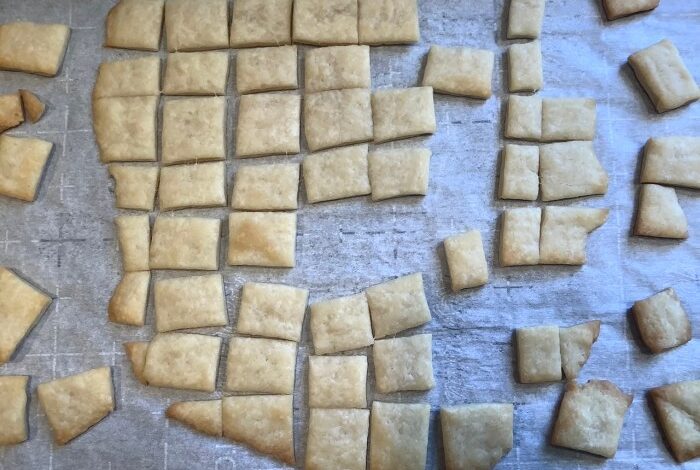
Unleavened Bread for Communion: A Symbol of Simplicity and Sacrifice
Unleavened bread for communion, a staple in many Christian traditions, holds a rich history and profound symbolism. From its origins in ancient Jewish practices to its contemporary use in modern-day services, this simple bread represents a powerful message of sacrifice, humility, and the enduring connection between believers and their faith.
This humble bread, devoid of leavening agents, serves as a poignant reminder of the Israelites’ hasty exodus from Egypt, their journey marked by urgency and a lack of time for bread to rise. In the context of communion, it symbolizes the simplicity and purity of Christ’s sacrifice, and the unblemished nature of his offering.
Preparation and Usage of Unleavened Bread: Unleavened Bread For Communion

Unleavened bread, also known as matzah or bread without yeast, is a staple in many religious traditions, particularly in Judaism and Christianity. It holds significant symbolic meaning and is often used in religious ceremonies, especially during communion or Passover. The preparation and usage of unleavened bread vary depending on the denomination and specific religious practices.
Preparation of Unleavened Bread
Preparing unleavened bread requires careful attention to detail and adherence to specific guidelines. The process involves combining flour and water, kneading the dough, and baking it quickly to prevent the rise caused by yeast. Here is a step-by-step guide on how to prepare unleavened bread for communion:
- Gather the ingredients:You will need flour, water, and salt. The exact proportions may vary depending on the recipe and desired texture.
- Mix the ingredients:Combine the flour, water, and salt in a bowl. Mix them thoroughly until a smooth dough forms.
- Knead the dough:Knead the dough for about 5-10 minutes until it becomes elastic and smooth.
- Shape the dough:Divide the dough into portions and shape them into desired sizes. You can create round loaves, flatbreads, or squares.
- Bake the bread:Preheat the oven to 350 degrees Fahrenheit (175 degrees Celsius). Place the shaped dough on a baking sheet and bake for 10-15 minutes or until golden brown.
Recipes and Variations of Unleavened Bread
Unleavened bread recipes and variations are found in various denominations.
- Matzah:This is the traditional unleavened bread used in Jewish Passover. It is made with only flour and water and is thin and crispy.
- Unleavened Bread for Communion:Some Christian denominations use unleavened bread for communion. These recipes may include ingredients like olive oil or honey for flavor and texture.
Handling and Storage of Unleavened Bread, Unleavened bread for communion
Unleavened bread is delicate and should be handled with care. It is essential to store it properly to maintain its freshness and integrity.
- Handling:When handling unleavened bread, avoid touching it with your hands as much as possible. Use clean utensils or gloves to prevent contamination.
- Storage:Unleavened bread should be stored in an airtight container in a cool, dry place. Avoid storing it in direct sunlight or near heat sources.
Unleavened Bread in Contemporary Practice
The use of unleavened bread in communion services remains a vital part of Christian practice today. It serves as a tangible reminder of the Last Supper, symbolizing Jesus’ sacrifice and the bread of life offered to believers.
The Significance of Unleavened Bread in Community
The shared act of breaking bread together fosters a sense of unity and belonging among those participating in communion. This act transcends cultural and denominational differences, uniting believers in a shared experience of faith. The simple act of breaking and sharing unleavened bread becomes a powerful symbol of the shared sacrifice and love that binds the Christian community.
The simplicity of unleavened bread for communion reminds me of the humble yet satisfying nature of a good soup. For a hearty and comforting meal, I often turn to a hearty minestrone soup instant pot recipe, which is packed with vegetables and beans.
Just like the unleavened bread, this soup is a reminder that sometimes the most basic ingredients can create the most satisfying and meaningful experiences.
The simplicity of unleavened bread for communion reminds me of the beauty of a perfectly cooked meal. There’s a similar sense of purity in the flavors of a pan seared duck breast with blueberry sauce , where each element shines through without being overwhelmed.
Just as the bread symbolizes the body of Christ, the dish speaks to the richness of life’s experiences, a reminder that even in simplicity, there’s profound meaning.
The simplicity of unleavened bread for communion always reminds me of the essential nature of faith. It’s a stark contrast to the elaborate meals we sometimes enjoy, like the flavorful and complex chef John’s hot and sour soup. While that soup is a symphony of tastes, the bread reminds us that true nourishment comes from something deeper, something that transcends the physical.

